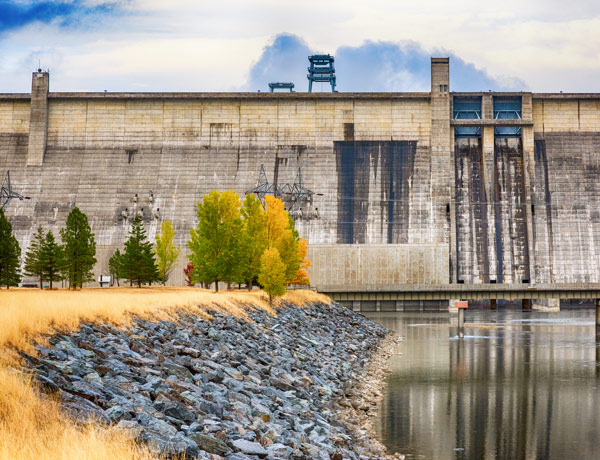Asbestos Cleanup Moving Forward at EPA’s Libby Superfund Site

Decontamination efforts in Libby, Montana – the largest asbestos cleanup project in American history – moved another step closer to completion this month, according to the U.S. Environmental Protection Agency.
The Montana Department of Environmental Quality and the EPA have determined that restoration efforts are complete in another major segment of the original Libby Asbestos Superfund site. A Superfund designation is defined as a federal public health emergency.
Contamination at the site stemmed from the W.R. Grace & Co. vermiculite mine, once the lifeblood of the area, that spread asbestos dust throughout the region for 50 years. It was placed on the EPA’s National Priorities List in 2002 because of high levels of amphibole asbestos spread throughout the communities of Libby and Troy, Montana.
The mine was closed in 1990 after almost 70 years of operation. It became known as the longest-running manmade environmental disaster in U.S. history.
Asbestos Mortality Rate Ranks Highest in US
Libby’s Center for Asbestos-Related Disease Clinic is currently treating and monitoring almost 2,500 people, either present or former residents, with health issues such as mesothelioma that are related to the contamination.
Health officials have documented more than 400 deaths and thousands of health conditions attributed to asbestos exposure in the area, making Lincoln County, Montana, home to the highest asbestos-related mortality rate in the country.
This latest segment to be completed in the sprawling cleanup effort is known officially as Operable Unit 8, which includes all roadways and major highways in and between Troy and Libby. No further remediation action is deemed necessary to protect human health and the environment in Unit 8, according to the EPA.
“This is the third operable unit deletion at the Libby Asbestos Superfund site in three years, a milestone that demonstrates the progress EPA and our partners have made in the cleanup and restoration of properties in Libby,” Betsy Smidinger, director of EPA Region 8’s Superfund and Emergency Management Division, said in the announcement.
Although most of the asbestos in the region is gone now or out of reach, its legacy will linger for years. Many asbestos-related diseases, including asbestosis, often take more than 20 years to develop after initial exposure. Mesothelioma and lung cancer can take up to 50 years before obvious symptoms present themselves.
EPA Continues to Monitor Site
Final restoration of the remaining units – except for the actual mine site – are expected to be announced soon. The cleanup portion of the process has been completed in seven of the eight units, but some are awaiting assessment before they can be deleted from the National Priorities List. The EPA also will continue monitoring contamination concerns at the remaining operable units until they are deleted.
In 2020, the EPA officially transferred responsibility and oversight of much of the project to the Montana Department of Environmental Quality but has remained involved. The just-completed unit will continue to be part of regular reviews and maintenance activities.
The ongoing cleanup project has cost federal taxpayers more than $600 million, according to various estimates. It includes the removal of more than a million cubic yards of dirt and building materials. Cleanup and inspection of all residential and commercial properties is complete.